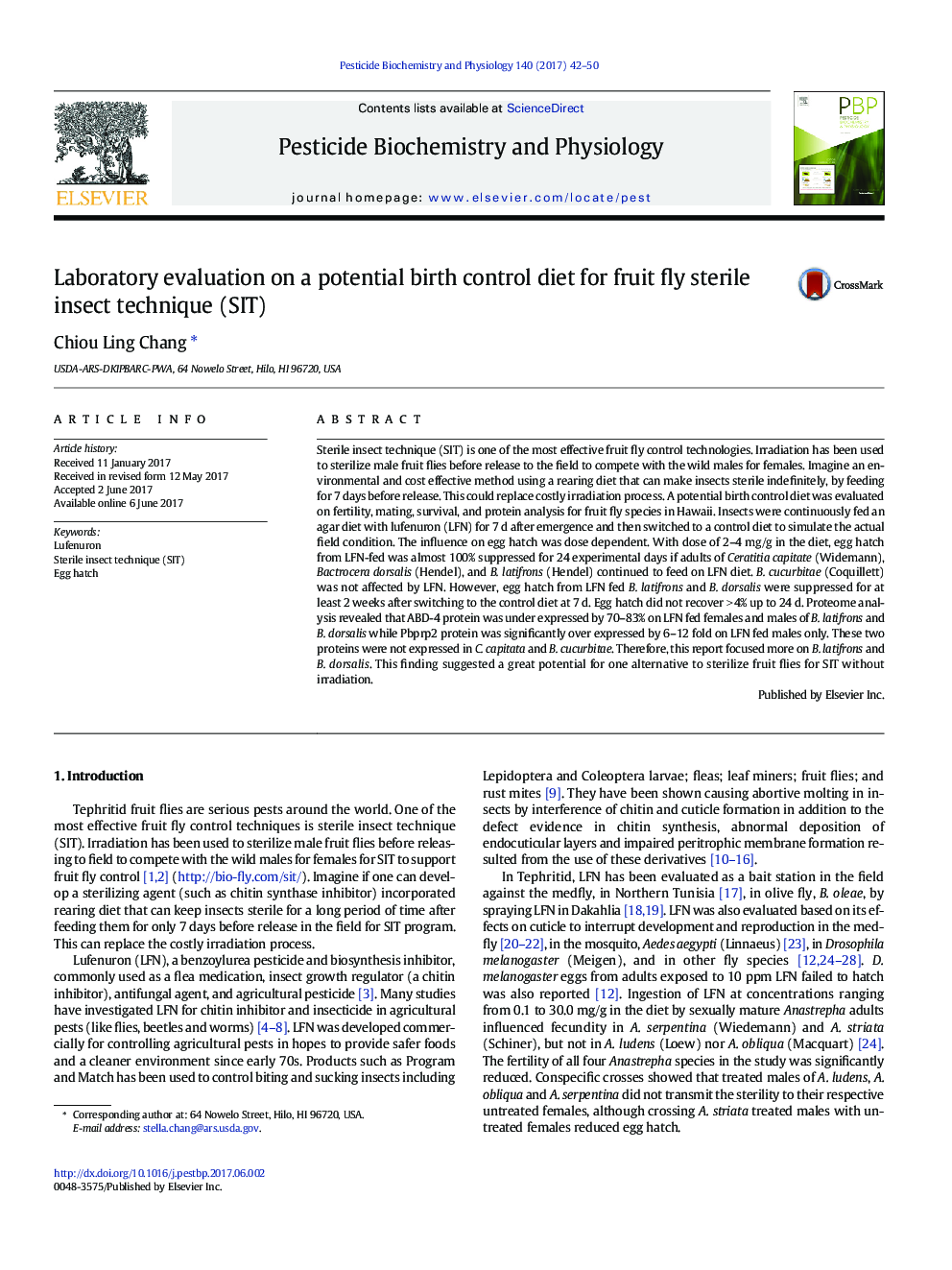| کد مقاله | کد نشریه | سال انتشار | مقاله انگلیسی | نسخه تمام متن |
|---|---|---|---|---|
| 5514924 | 1541759 | 2017 | 9 صفحه PDF | دانلود رایگان |

- A potential birth control diet using lufenuron for fruit fly SIT is evaluated in the laboratory.
- Evaluation is based on survival, mating, fertility, and proteome analysis.
- Diet is fed to adults for initial 7Â d to induce sterility and then switch to control diet.
- Fertility is suppressed up to 91% in 41Â days, mortality and mating were not seriously affected.
- ABD-4 protein was down-regulated and Pbprp protein was up regulated after lufenuron treatment.
Sterile insect technique (SIT) is one of the most effective fruit fly control technologies. Irradiation has been used to sterilize male fruit flies before release to the field to compete with the wild males for females. Imagine an environmental and cost effective method using a rearing diet that can make insects sterile indefinitely, by feeding for 7Â days before release. This could replace costly irradiation process. A potential birth control diet was evaluated on fertility, mating, survival, and protein analysis for fruit fly species in Hawaii. Insects were continuously fed an agar diet with lufenuron (LFN) for 7Â d after emergence and then switched to a control diet to simulate the actual field condition. The influence on egg hatch was dose dependent. With dose of 2-4Â mg/g in the diet, egg hatch from LFN-fed was almost 100% suppressed for 24 experimental days if adults of Ceratitia capitate (Widemann), Bactrocera dorsalis (Hendel), and B. latifrons (Hendel) continued to feed on LFN diet. B. cucurbitae (Coquillett) was not affected by LFN. However, egg hatch from LFN fed B. latifrons and B. dorsalis were suppressed for at least 2Â weeks after switching to the control diet at 7Â d. Egg hatch did not recover >Â 4% up to 24Â d. Proteome analysis revealed that ABD-4 protein was under expressed by 70-83% on LFN fed females and males of B. latifrons and B. dorsalis while Pbprp2 protein was significantly over expressed by 6-12 fold on LFN fed males only. These two proteins were not expressed in C. capitata and B. cucurbitae. Therefore, this report focused more on B. latifrons and B. dorsalis. This finding suggested a great potential for one alternative to sterilize fruit flies for SIT without irradiation.
255
Journal: Pesticide Biochemistry and Physiology - Volume 140, August 2017, Pages 42-50